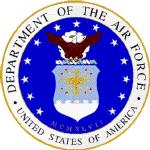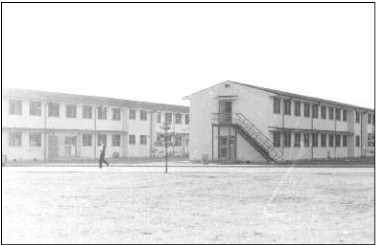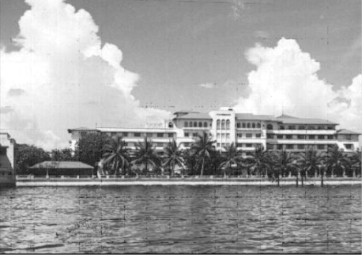Rainey Grenier

California
 Rainey Grenier was the oldest son of Adonais and Noella Despres Grenier's six children. He joined the U.S. Air Force on March 28, 1955. He first went to Boot Camp at Sampson AFB in Geneva, NY.
Rainey Grenier was the oldest son of Adonais and Noella Despres Grenier's six children. He joined the U.S. Air Force on March 28, 1955. He first went to Boot Camp at Sampson AFB in Geneva, NY.

SAMPSON AFB, NY Rainey arrived at Sampson one cold March morning to start his Air Force experience. Sampson AFB was originally built in 1942 as a Naval Training Station. The base closed at the end of WWII and Sampson was reactivated as a USAF Training Base in 1951.For six years, until 1956, the base was alive with young Air Force Men and Women training to serve their country. During the period over 300,000 men received their basic training and another 50,000 men and women were stationed here as permanently. The base closed in 1958, part was given to Seneca Army Depot which later closed. Uncle Rainey attended The Air Force's Basic Training here from March until June 1955.
 Click on photos to enlarge
Click on photos to enlarge
Rainey's boot camp class
FORT BELVIOR, VA
Uncle Rainey Arrived in June of 1955 to Fort Belvior to learn his chosen Air Force Trade- Draftsman. A Draftsman is someone who can draw grapic designs and place them in reports and presentations for breifings and training. It might seem unusual for Air Force personnel to attend an Army school, but the Air Force used to be part of the Army and had just recently(1947) became it's own branch of the service. The Air Force did not have, nor really need to have it's own training schools since that would be redundant. As time went on they eventual started thier own school system as the technical requirements became necessary for them to do so. However, to this day there are still some schools that the Air Force as well as the other services send their personnel to rather than start their own.
Fort Belvior History
Was first established at the beginning of the 19th centry as a battery overlooking the bluffs of the potomac river during the War of 1812. In 1912, Congress transferred the property to the War Department, following an Army request to use the land as a training site. The U.S. Army began utilizing the Belvoir peninsula as an engineer training facility in 1915. The facility evolved from the U.S. Army's Engineer School, which was established during the late 19th Century at Fort Totten, New York. America's entry into World war I in April 1917 led to the first wave of military construction at the Virginia training site. Construction of the temporary cantonment, named Camp A.A. Humphreys in honor of Civil War Commander and former Chief of Engineers, Andrew A. Humphreys, began in January 1918 under very difficult conditions. At war's end in November 1918, Camp A.A. Humphreys became a demobilization center where troops were prepared for their return to civilian life. By the close of 1919, more than 14,000 men had been demobilized at Camp A.A. Humphreys. The camp retained a small garrison after the war.
The Engineer Officers' Training Center operated at Camp Humphreys until February 1919. Also during 1919 the camp became the "home" of the Corps of Engineers. Following the Engineer School's move, Camp A.A. Humphreys was designated a permanent post in 1922 and renamed Fort Humphreys. It was maintained as a training facility throughout the 20’s and 30’s. In 1935, the name of the installation was changed from Fort Humphreys to Fort Belvoir. Fort Belvoir again expanded. To accommodate the influx of draftees after 1940, an additional 3,000 acres were acquired The camp further expanded throughout WWII becoming the premier Engineering Replacement Center for the Army. By the end of World War II in 1945, Fort Belvoir once again became a demobilization center with facilities designed to ease the transition between military and civilian life.
Fort Belvoir's mission expanded in other directions between 1950 and 1960. The post began playing host to a variety of organizations and became a premier training facility not only for the Army but the other services as well. Uncle Rainey departed Fort Belvior in September 1955 for his next posting....JAPAN!





Pictures of the 6002AISG, the barracks, Rainey and friend, and Rainey outside the 6002nd at Shiroi Air Base in Japan
AIR FORCE INTELLIGENCE
Uncle Rainey was Stationed at the 6002nd Air Intelligence Service Group, Headquarters Shiroi Air Base, Japan located near Tokyo. He was only stationed there for three months from October 1955 to January 1956 then he was transferred to the 6002nd AISG -Det 1 at the Manila Air Station, Manila, Philippines.

6002nd AISG
The Mission of the 6002d Air Intelligence Service Group established during the Korean war was to provide an organization within Far East Air Force Command (FEAFC)which would:
a. Collect positive air intelligence information by overt means from:
(1) Downed enemy air crews
(2) Enemy materiel
(3) Enemy documents
b. Collect information for such Bomb Damage Assessment as may be directed by Headquarters, United States Air Force.
It was established by the FEAFC and the initial planning Staff prior to activation of the unit that the squadron's efforts would be primarily channeled toward collection of information from Soviet prisoners and equipment rather than forming a unit of multi-language and technical capability. All formal training within the unit was based on this plan.
The Bomb Damage assessment capability was limited to that of providing a file of pre-strike photos, charts, graphs and Photographs, and making initial damage assessment reports to FEAFC from photo samples from the Tactical Air Command unit assigned. After the war the Special projects assigned to the Photo Unit during the time at Shiroi and Manila included: making 35 mm. Color slides of the radar coverage in China, aerial photography of gun emplacements for the N. Korean Anti-Aircraft Artillery sites, aerial photography of all radar sites and air strips north of 38th parallel and of all strips within a twenty-five (25) miles of the Demilitarized zone.
Some specific activities of the 6002nd were to liaison with many local agencies, towns and villages, photographic surveillance of Soviet shipping, submarines, maintenance of target information centers for Strategic Air Command aircraft, and finally, establishment and operation of an Electronic Intelligence (ELINT) center. This was the primary duties of the unit when Uncle Rainey was there.
Uncle Rainey worked in Air intelligence monitoring Communist spy activities in mainland China, North Korea, and other far east countries. The sensitive information gathered from many sources throughout the entire region was processed, analyzed, and reported to appropriate U.S. agencies. Rainey was a draftsman and part time photographer. He helped prepare graphical representations of those reports for the intelligence agencies. The 6002nd was attached to the 13th Air Force headquartered at Clark AFB, in the Philippines.

The Main Gate at the Manila Air Base



Pictures of the 6002AISG Det 1, the Manila Hotel, and Rainey and his CO in the Phillipines
SANGLEY NAVAL AIR STATION
While stationed at Manila Air station Uncle Rainey had a chance to visit and work with the U.S. Naval Station at Sangley Point. Sangley Point was located on a peninsula jutting into Manila Bay, approximately eight miles southwest of the city of Manila. More than half century before, Commodore Dewey steamed into Manila Bay in 1898, and destroyed the Spanish fleet which was anchored off of Sangley point. Now in 1955, the U.S. Navy owned the historic pennisula and flew VP patrol craft from there. The Navy VP patrol craft would fly out and track Soviet submarines that were submerged in the South China Sea. During the cold war the Soviet Navy built up their submarine forces. Submarines were always a threat to free world shipping, and a source of espionage. The U.S. Navy used their P2-V Patrol Craft to track those submarines using state of the art electronics. All of that intelligence information would then be flown back to intelligence units like the 6002nd to be analyzed and forwarded to the proper agencies. Sangley Point was just one of many Naval Air Stations used for that mission.
to find out more about NAS Sangley click here
to find out more about VP squadrons click here

Top:F-89j Scorpion at Manila Air Station. Bot: Navy P5M Mariner Patrol Craft at NAS Sangley Point

Better known as the “Jungle Air force”, was Activated at New Caledonia in the Coral Sea on Jan 13, 1943. The Thirteenth Air Force began operations as a small organization composed of numerous widely separated and independent units scattered throughout the Pacific. From 1943-1945, In August 1947, Thirteenth Air Force returned to Clark Field, in December 1948, the unit then moved to Kadena, Okinawa, where it remained for only a few months before returning to Clark in May 1949. During the Korean Conflict, Thirteenth Air Force units provided staging areas for people and equipment destined for the war zone. During the decade of peace that followed the war, the command concentrated on training and surveillance activities to maintain a high state of readiness for contingencies during peace time. Uncle Rainey's story continues on the next page.
PAGE 2
HOME
















